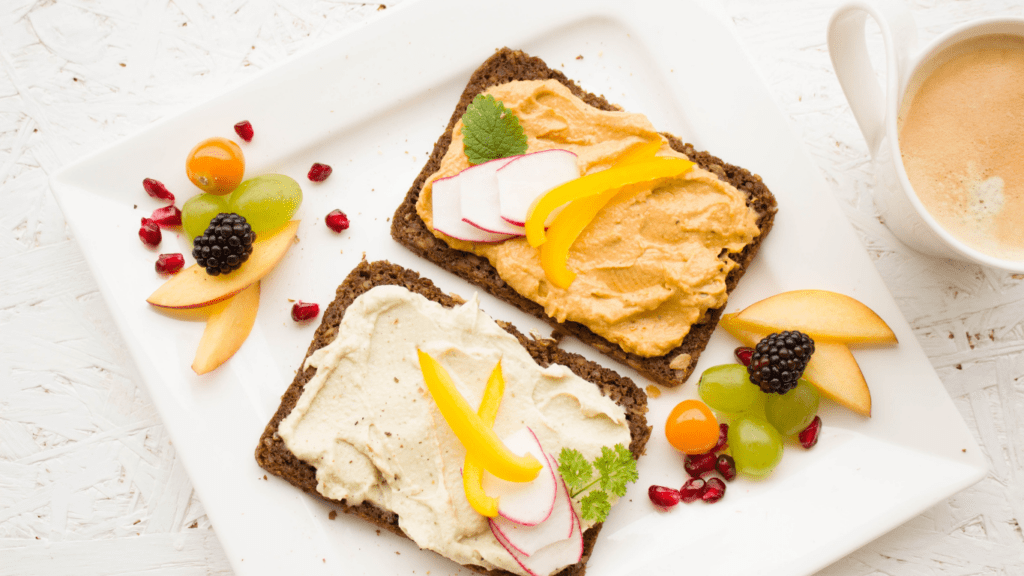Understanding Plant-Based Diets for Children
Transitioning to a plant-based diet for children requires careful consideration of nutritional needs. Parents must understand both the benefits and potential risks.
Benefits of Plant-Based Eating
Plant-based diets offer numerous health benefits. These diets are typically rich in essential nutrients and fiber from fruits, vegetables, legumes, and whole grains. Children consuming plant-based diets often have lower risks of obesity, type 2 diabetes, and heart disease.
Studies from authoritative sources, such as the CDC and NIH, show how high fiber intake can improve digestive health and support healthy weight. Additionally, plant-based diets promote better environmental sustainability, providing children with a sense of contributing to planet conservation.
Potential Nutritional Deficiencies
While plant-based diets have many benefits, ensuring children receive all necessary nutrients is crucial. Essential nutrients like vitamin B12, iron, calcium, and omega-3 fatty acids can be more challenging to obtain from plant sources alone.
For instance, vitamin B12, critical for nerve function and red blood cell production, is commonly found in animal products but limited in plants. Parents may need to provide fortified foods or supplements.
Iron from plant sources (e.g., lentils, tofu) is not as bioavailable as iron from animal products, so pairing it with vitamin C-rich foods like bell peppers can enhance absorption.
Calcium and vitamin D, vital for bone health, might require fortified plant milks. Omega-3 fatty acids, crucial for brain development, can be sourced from flaxseeds, chia seeds, and walnuts.
Making informed decisions about food choices and possibly consulting with a pediatric dietitian ensure children thrive on a plant-based diet.
Key Nutrients in a Child’s Plant-Based Diet

Ensuring children receive the necessary nutrients in a plant-based diet is vital for their growth and development. Several key nutrients deserve special attention.
Protein Sources in Plant-Based Diets
Children can meet their protein needs with a variety of plant-based sources. Legumes like lentils, chickpeas, and black beans provide substantial protein. Quinoa, a complete protein, offers all nine essential amino acids.
Nuts and seeds such as almonds, chia seeds, and hemp seeds are excellent protein-rich options. Soy products like tofu, tempeh, and edamame also supply high-quality protein. Incorporate a combination of these foods to ensure balanced amino acid intake.
Essential Vitamins and Minerals
Certain vitamins and minerals require careful monitoring in a child’s plant-based diet.
- Vitamin B12: This crucial vitamin is generally absent in plant foods. Fortified cereals, plant-based milks, and nutritional yeast are effective sources.
- Iron: Plant-based iron is less readily absorbed than animal sources. Include beans, lentils, spinach, and fortified cereals. Enhance absorption by pairing with vitamin C-rich foods like oranges and strawberries.
- Calcium: Crucial for bone health, good plant-based sources include fortified plant milks, tofu, almonds, and leafy greens like kale and bok choy.
- Omega-3 Fatty Acids: Important for brain health, these can be found in flaxseeds, chia seeds, walnuts, and algae-based supplements.
By strategically including these foods, children can thrive on a plant-based diet without nutritional deficiencies.
Planning Balanced Plant-Based Meals for Kids
Planning balanced plant-based meals for kids involves incorporating a variety of foods to ensure they’re getting all necessary nutrients. It’s essential to mix different food groups to cover protein, carbohydrates, fats, vitamins, and minerals.
Sample Meal Ideas
Creating balanced plant-based meals can be simple with a thoughtful approach to ingredients.
- Breakfast: Oatmeal topped with fruits, chia seeds, and almond milk. Whole grain toast with avocado spread and a side of fresh berries.
- Lunch: Quinoa salad with chickpeas, mixed greens, cherry tomatoes, and a lemon-tahini dressing. A side of carrot sticks and hummus.
- Dinner: Lentil stew with sweet potatoes, kale, and a side of brown rice. A serving of steamed broccoli and a small portion of fortified soy yogurt for dessert.
- Snacks: Mixed nuts and dried fruits. Apple slices with peanut butter or a smoothie made with spinach, banana, and fortified plant milk.
Tips for Diverse and Nutritious Meals
Making meals diverse and nutritious keeps kids interested and ensures they get a range of nutrients.
- Rotate Protein Sources: Use various protein sources like beans, lentils, quinoa, tofu, and tempeh to provide essential amino acids.
- Include Whole Grains: Integrate whole grains like brown rice, barley, and whole wheat pasta to add fiber and nutrients.
- Incorporate Colorful Vegetables: Add a rainbow of vegetables such as carrots, bell peppers, and leafy greens to meals, which offer assorted vitamins and minerals.
- Fortified Foods: Use fortified plant milks and cereals to help meet nutritional needs like vitamin B12, calcium, and vitamin D.
- Healthy Fats: Include sources of healthy fats like avocados, nuts, seeds, and olive oil to support overall growth and brain development.
- Engage Kids in Meal Prep: Involve kids in selecting and preparing meals to increase their interest in diverse foods and improve their nutritional intake.
Common Challenges and Solutions
Introducing plant-based diets to children comes with its own set of challenges. Addressing these issues effectively ensures children thrive on this diet.
Addressing Picky Eating
Picky eating is common among children, especially when introducing new plant-based foods. To tackle this, I involve kids in meal prep, letting them choose veggies for meals.
I offer a variety of colorful vegetables and fruits, presented attractively to make them appealing. Incorporating familiar flavors, like blending spinach into a favorite smoothie, helps children accept new foods.
Creating fun food shapes with cookie cutters works well too. Patience is key; repeated exposure to new foods without pressure can reduce pickiness over time. Studies suggest that children might need multiple exposures to accept a new food. Offering dips like hummus or nut butter can make veggies more enticing.
Ensuring Adequate Caloric Intake
Children on plant-based diets need adequate calories for growth and development. High-calorie, nutrient-dense foods such as avocados, nuts, seeds, and whole grains ensure they get enough energy.
I make smoothies with nut butter and flaxseeds or add avocado to sandwiches and salads. Regular meals and snacks help sustain energy levels. According to the American Academy of Pediatrics, appropriate portion sizes and balanced meals are vital.
Using olive oil or coconut oil in cooking adds healthy fats and extra calories. Monitoring growth charts and discussing any concerns with a pediatrician ensures that children stay on track with their nutritional needs.

 Hazeliin Davidsoninn, the founder of Toddler Health Roll, is an insightful article writer with a passion for children's health and well-being. Her writing reflects a deep understanding of the challenges parents face when raising toddlers, offering practical advice grounded in the latest pediatric research. With a keen eye for detail and a compassionate approach, Hazeliin's articles provide parents with the tools they need to nurture their children's physical, mental, and emotional health.
Beyond her expertise in child health, Hazeliin's writing also delves into the complexities of toddler nutrition, travel with young children, and effective parenting strategies. Her dedication to sharing valuable knowledge with her readers has made Toddler Health Roll a trusted resource for parents seeking guidance on raising happy, healthy toddlers.
Hazeliin Davidsoninn, the founder of Toddler Health Roll, is an insightful article writer with a passion for children's health and well-being. Her writing reflects a deep understanding of the challenges parents face when raising toddlers, offering practical advice grounded in the latest pediatric research. With a keen eye for detail and a compassionate approach, Hazeliin's articles provide parents with the tools they need to nurture their children's physical, mental, and emotional health.
Beyond her expertise in child health, Hazeliin's writing also delves into the complexities of toddler nutrition, travel with young children, and effective parenting strategies. Her dedication to sharing valuable knowledge with her readers has made Toddler Health Roll a trusted resource for parents seeking guidance on raising happy, healthy toddlers.
